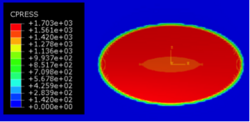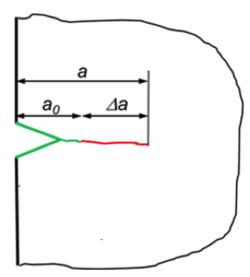Increasing time and cost pressure in product development as well as the quest for cost and weight optimized products call for an integrated approach towards product design. On the part of strength of materials and structures, this is met by so-called Fitness-for-Service or Fitness-for-Purpose concepts. These concepts account simultaneously for the four main factors affecting safe operation of a structural part:
- external loading
- required lifetime
- local properties and state of the material
- eventual damage during manufacturing and/or operation
The prediction accuracy depends crucially on knowing the loading of the structural component during operation as exactly as possible. This comprises static and cyclic mechanical loading including occasional or periodic overloads as well as environmental influences such as elevated or frequently changing operational temperatures, corrosive media, hydrogen embrittlement etc.
The lifetime of a component depends on the product lifetime and the decision whether the component can or should be replaced in regular service intervals – leading to the classical dilemma of balancing initial costs, maintenance costs and product reliability.
The material selection is then performed according to loading, lifetime and eventual additional requirements with respect to component dimensions and weight. Special attention has to be paid to manufacturing and post-treatment processes, which may significantly enhance the local material properties in highly loaded regions. For example, heat treatment and thermo-mechanical post-treatments such as hammer peening, shot peening, roller burnishing or deep rolling may induce compressive residual stresses with an enormous potential for strength and/or lifetime enhancement.
Accounting for eventual damage during manufacturing and/or operation leads to the concept of damage tolerance. Using methods from fracture mechanics, the influence of production induced flaws (casting, forging, rolling flaws) as well as operation induced flaws (Foreign Object Damage, e.g., bird strike in aerospace applications or ballast impact in railway axles and bogies). This approach naturally leads to optimized maintenance concepts, where the inspection intervals are determined according to the detected flaw size. This means, of course, that the presence of any flaws exceeding a certain size must be excluded by means of appropriate non-destructive testing methods.






















![Foreign Object Damage: influence of notch size and crack length on the fatigue endurance limit th (grey: conventional model; colored: enhanced model developed at MCL [Maierhofer et al. 2014]).](/fileadmin/_processed_/9/0/csm_Simul_FE_Strukturmech4_0bf974a27a.png)